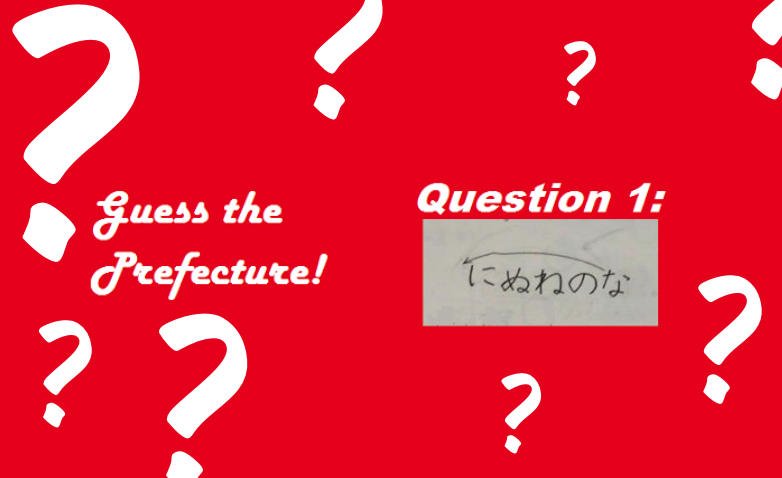JQ Magazine: Book Review — ‘Halfway Home: Drawing My Way Through Japan’
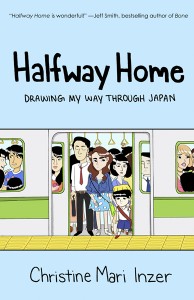
“Through reading her travelogue, Inzer comes across as a writer who would make an excellent travel blogger, as she gives prospective visitors to Japan fascinating tidbits about the country’s culture and attractions.” (Naruhodo Press)
By Rashaad Jorden (Yamagata-ken, 2008-10) for JQ magazine. A former head of the JETAA Philadelphia Sub-Chapter, Rashaad is a graduate of Leeds Beckett University with a master’s degree in responsible tourism management. For more on his life abroad and enthusiasm for taiko drumming, visit his blog at www.gettingpounded.wordpress.com.
You may remember being treated to “What I did during my summer vacation” tales in elementary school. Well, Christine Mari Inzer spent a memorable summer vacation visiting family in Japan and she documents those travels in a largely visual journey titled Halfway Home: Drawing My Way Through Japan.
Halfway Home—so-titled because Inzer, the daughter of a Japanese mother and American father, describes herself as being half at home in the United States and half at home in Japan—summarizes her travels through a collection of photos, illustrations (all self-drawn), and anecdotes. Geared toward young adults (the author is currently a high school senior in Connecticut), Inzer details the ups and downs of travel while humorously detailing some moments of aggravation, such as her frustration with the shyness of Japanese boys.
For young people interested in eventually visiting Japan, Halfway Home provides an introduction to several of the country’s landmarks (the Daibustu in Nara, Kinkaku-ji, in Kyoto, etc.), cultural aspects, and quirks (such as the ubiquity of vending machines). Through reading her travelogue, Inzer comes across as a writer who would make an excellent travel blogger, as she gives prospective visitors to Japan fascinating tidbits about the country’s culture and attractions.
While the journal might have been enhanced a bit with the inclusion of a couple of other aspects of Japanese culture (if Inzer spent a summer in Japan, you would think she surely had to have experienced a hanabi taikai), you don’t have to be a teen to enjoy Halfway Home. Reading about her journey through Japan will surely evoke natsukashii moments for anyone who has spent a lot of time in the country.
Visit Christine’s homepage at http://christinemari.com. For more JQ magazine book reviews, click here.
【RocketNews24】Are you smarter than a (Japanese) 5th grader? Take this mind-bending test and find out!
Posted by Michelle Lynn Dinh (Shimane-ken, Chibu-mura, 2010–13), editor and writer for RocketNews24. The following article was written by KK Miller, a writer and translator for RocketNews24, a Japan-based site dedicated to bringing fun and quirky news from Asia to English speaking audiences.
Pretty much everyone enjoys being able to help their younger siblings or kids with their elementary school homework. It’s a little piece of joy to pass on what you’ve learned and prove how cool of a mom/dad or big brother/sister you are. You impart some simple knowledge and see the little light bulb turn on in their head as they begin to understand. Then you can sit back and watch with confidence as they interact with the world around them.
But what do you do when the homework is a question that even you can’t answer? This brainteaser had everyone in one Japanese family stumped for over an hour, so they turned to Twitter for help. And then much of the Internet was stumped too. Take a look at these riddles and see how many you can get playing: What Prefecture is This?
Some brain teasers never make you feel good, and you just need to get the answer however you can. That’s probably why one girl recently tweeted her sister’s elementary school homework. But we kind of agree with her: how is this elementary school homework?!?
Are you up for the challenge? Let’s try it ourselves!
Highlight to reveal answer: Nagasaki (長崎)
Yes, that row of hiragana characters is supposed be a hint at the name of a Japanese prefecture. Any ideas?
Just as there is an order for the alphabet, there is an order for the Japanese syllabary. All characters are placed in rows by their vowels sounds in the order: [a], [i], [u], [e], [o]. In the picture above, however, the hiragana characters begin from “i”, reading: ni (に),nu (ぬ), ne (ね), no (の), with na (な) all the way at the end. To any native Japanese person, this should seem seriously strange since, as the little arrow tells us, na should be at the front! Or, in Japanese: “Na ga saki ni.” Clever!
Didn’t get this first one correct? Check out the rest of the quiz at RocketNews24!
JQ Magazine: JQ&A with Grammy Winner Arnie Roth on ‘Distant Worlds: Music from Final Fantasy’

“I can honestly say that I currently spend much of my career involved with Japan on so many projects, that I almost cannot imagine what it would be like without all of our Japanese friends and colleagues.” (Courtesy of Attila Glatz Concert Productions)
By Vlad Baranenko (Saitama-ken, 2000-02) for JQ magazine. Vlad is an avid photographer.
Sephiroth, meet Maestro Roth.
On Jan. 31, the New Jersey Performing Arts Center will hold a double performance marathon of Distant Worlds: Music from Final Fantasy, an official concert program of the beloved video game series, also coming to Boston (April 24) and St. Louis (May 15). Featuring special guest series composer Nobuo Uematsu and featured soloists RIKKI and Susan Calloway, the show will feature game clips playing to the performance of a symphony orchestra, choir and renowned vocal talent, all under the direction of Grammy Award-winning conductor (and Mannheim Steamroller member) Arnie Roth.
Roth’s resume includes a long list of music direction for television, film, and video games. A veteran collaborator on pop, classical, R&B, rock and musical theater, Roth has also worked with some of the world’s greatest ensembles like the Tokyo Philharmonic and with legendary video game composers including Uematsu, Yoko Shimomura (Kingdom Hearts), Akira Yamaoka (Silent Hill), Yuzo Koshiro (Streets of Rage), and Koji Kondo (Super Mario Bros.).
In this JQ exclusive, Roth shares the experience of bringing together 27 years (and counting) of Final Fantasy to the concert stage, working with Uematsu and others in the Japanese game industry, and his all-time favorite Japanese food.
How did you get involved with the Final Fantasy franchise?
In 2004, as music director of the Chicagoland Pops Orchestra, I was researching various possibilities for new and exciting programming for our concerts. A colleague mentioned that concerts of video game music had been taking place in Japan on a very regular basis for many years, since 1999 or maybe even earlier. After checking into Final Fantasy concerts, we decided to try a concert in Chicago in February 2005. That concert was titled Dear Friends: Music from Final Fantasy, and our concert sold out completely. That was my first time meeting Nobuo Uematsu and conducting his music, and we immediately connected. Immediately after that concert, I was engaged to conduct several more of the Dear Friends concerts in North America, and then my relationship with [Final Fantasy publisher] Square Enix (SQEX) and Uematsu grew to be a very important factor, with concerts in Japan for SQEX, and ultimately the development of the Distant Worlds project.
Did you have any exposure to the Final Fantasy games before directing and conducting the Tokyo Philharmonic in 2006?
Yes. See above for my earlier involvement with the FF franchise and SQEX and Uematsu. Another little-known fact was that I worked on the original release of the Halo video game music score, both as a violinist and arranger.
What do you think about Final Fantasy and the musical choices for the games?
The music is stunning! Final Fantasy is a role-playing game, and the combination of this type of game, along with having individual themes or leitmotifs for every character, battle, quest, relationship, and environment, has made the music of this franchise extremely beloved for the players.
Justin’s Japan: Nippon in New York — Akira Toriyama Returns, Final Fantasy, Video Games Live
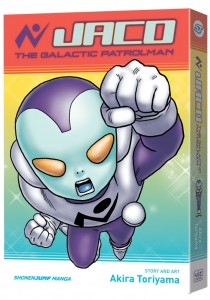
Jaco the Galactic Patrolman, the latest manga from Dragon Ball creator Akira Toriyama, arrives Jan. 6. (VIZ Media)
By JQ magazine editor Justin Tedaldi (CIR Kobe-shi, 2001-02) for Examiner.com. Visit his Japanese culture page here for related stories.
Start 2015 off right by heading down to your local concert hall, consulate, or arts center for some fantastic new year’s fare. Whether you enjoy kendo, classic film, or orchestral performances from the greatest video games of all time, treat yourself and catch a break from the cold.
This month’s highlights include:
Tuesday, Jan. 6
$9.99 print/$6.99 digital
Dragon Ball creator Akira Toriyama is back with this quirky new interstellar comedy, collected in English for the first time! Retired scientist Omori lives alone on a deserted island while continuing his research into time travel. His quiet life is interrupted when galactic patrolman Jaco crash lands and decides to move in with him. This agent from space claims to be elite, but sometimes it can be a little hard to believe. Can Jaco get along with the old man long enough to save the earth from a dangerous threat?
Jan. 9-10, 7:30 p.m.
16th Contemporary Dance Showcase: Japan + East Asia
Japan Society, 333 East 47th Street
$28/$25 Japan Society members
This bi-annual favorite, hailed by the the New York Times as “a hot ticket,” returns with a standout line-up of groundbreaking artists from the other side of the globe. This year’s showcase includes from Japan: Nobuyuki Hanabusa’s group enra performing Newton, an out-of-this-world amalgamation of motion graphics and choreography; Mikiko Kawamura’s street style solo Alphard set to a bold soundscape with J-pop and classical music; and Kaori Seki’s quartet Marmont, in which bodies morph into nebulous creature-like positions. From Taiwan: I-Fen Tung’s fresh duo How to Say grapples with communication through words and dance and Shang-Chi Sun’s Traverse, in which graceful martial arts-like movements oscillate between combat speed and tranquility. The Friday, Jan. 9 performance is followed by a MetLife Meet-the-Artists Reception.
Jan. 13-Feb. 12
Views of Kendo: Photographs from Japan
Consulate General of Japan in New York, 299 Park Avenue, 18F
Free
A series of photographs taken on a recent trip to Japan for research by filmmaker Amy Guggenheim, who is currently working on When Night Turns to Day, a fictional story about kendo, the art of the Japanese sword, slated for production late 2015. Although competitive, the purpose of Kendo isn’t winning or losing, but bu, a state of (enlightened) mind. In a dramatic relationship, two people face each other sword to sword, up close and personal, both seemingly immovable. Through these photos—shot in November at the All Nippon Kendo Tournament in Tokyo—witness the exhilarating encounter of first-rate players that captures the spirit in motion as the match unfolds. A special benefit party for the making of the film will be held at the Kitano Hotel on Tuesday, Jan. 13 at 7:00 p.m. Click here for details.
For the complete story, click here.
From JET to NPR: An Interview (and Playlist) from Producer Robin Hilton
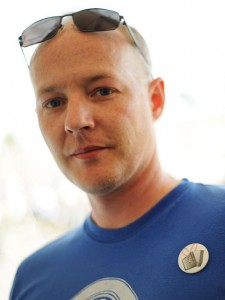
“The best you can do is be fearless and open. If you find yourself avoiding a possible career path because you’re afraid of something, stop. Take a deep breath and jump into it. You can’t expect to grow or get anywhere by playing it safe.” (Courtesy of Robin Hilton)
By Sheila Burt (Toyama-ken, 2010-2012) for JQ magazine. Sheila is a grant proposal writer at the Center for Bionic Medicine at the Rehabilitation Institute of Chicago. Read more of her reporting and writing at her blog.
Robin Hilton (Aichi-ken, 1996-99) is a radio producer and co-host of NPR’s music program All Songs Considered. In this JQ exclusive, Hilton shares his experiences on the JET Program in the late 1990s and his radio documentary Big in Japan, a comical and poignant reflection on his daily life as an English teacher in Japan.
Growing up in the small town of Abilene in central Kansas, Hilton never imagined living or working in Japan. But around the same time he graduated from the University of Kansas in 1992, Abilene initiated a sister city and exchange program with Minori, Japan (now Omitama) in Ibaraki-ken. At the encouragement of the program’s director, Hilton applied for a job teaching English more than 6,000 miles away from his hometown, as he was excited to begin a new endeavor outside of his comfort zone and experience a different culture. Yet Hilton would still have to wait a few years before his new adventure in Japan could begin.
“I didn’t get [the position],” Hilton recalls, “but it planted the seed in me, so a few years later I decided to try for the JET Program. I didn’t grow up with a deep fascination with or love of the country. But it ended up being one of the greatest things I’ve ever done with my life, and I certainly have that deep love for Japan now.”
JQ Magazine: Manga Review — ‘Showa 1944-1953: A History of Japan’

“If you enjoy or are interested in manga and history, or if you appreciate such excellent works as Maus, Persepolis or Barefoot Gen, then this series is a must-read.” (Drawn and Quarterly)
By Julio Perez Jr. (Kyoto-shi, 2011-13) for JQ magazine. A bibliophile, writer, translator, and graduate from Columbia University, Julio is currently working at Ishikawa Prefecture’s New York office while seeking opportunities with publications in New York. Follow his enthusiasm for Japan, literature, and comic books on his blog and Twitter @brittlejules.
Showa 1944-1953: A History of Japan is the third volume in a four-part manga history of the Showa period by eminent manga artist Shigeru Mizuki. (If you’re new to this series, check out JQ’s reviews of the first and second volumes here.)
Since I have already sung the praises of Mizuki’s excellent blending of realistic and comical art and storytelling as well as the top-notch translation by JET alum (and JQ interviewee) Zack Davisson (Nara-ken, 2001-04; Osaka-shi, 2004-06), I have decided to focus this review more on unpacking some of the contents of volume three and providing you with additional resources to look into if you wish to expand your knowledge about any of the topics that appear in the manga, including several wartime tragedies and the postwar occupation of Japan by the Allied Forces.
This volume focuses primarily on the grim latter years of World War II in the Pacific Theater. Despite the fact that Japan’s resources are running far past thin, the government and military persisted in continuing the conflict. This manga puts the spotlight on the plight of soldiers who have become the least important resource to the Japanese government, “Human life is the least valuable resource in the Japanese Army,” Mizuki writes. “Any suggestion that soldiers’ lives have meaning is tantamount to cowardice and treason. Soldiers are tools to be used. And the command’s greatest fear is that soldiers will flee from the enemy—or worse, surrender. They need them more afraid of dishonor than death.”
JQ Magazine: JQ&A with Patrick Newell, Founder of Tokyo International School
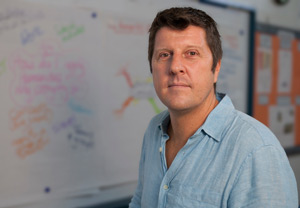
“Technology is constantly changing and students need to be equipped with the skills to master changing technology. They also need to be prepared for environmental, financial, civic and global literacy because of the interconnectedness of these issues in a globalized world.” (Courtesy of 21foundation.com)
By Lyle Sylvander (Yokohama-shi, 2001-02) for JQ magazine. Lyle has completed a master’s program at the School of International and Public Affairs at Columbia University and has been writing for the JET Alumni Association of New York since 2004. He is also the goalkeeper for FC Japan, a New York City-based soccer team.
Patrick Newell founded Tokyo International School in 2001, which has since become a model institution in many areas of education and learning. The same philosophy is behind the recent launch of the Global Institute, a 21st century kindergarten and afterschool program based in Naka-Meguro.
Patrick holds a postgraduate diploma from Oxford Brookes University with a concentration in international education, and has been a speaker and participant in over 20 international school conferences and workshops. He has also chaired International School Accreditation Teams for the Council of International Schools and New England Association of Schools and Colleges, and currently serves as the chair of the American Chamber of Commerce in Japan (ACCJ) Learning Committee.
In this exclusive interview, Newell shares with JQ how traveling the world sparked the interest his chosen profession, the subjects essential for students of the 21st century, and his work through the years as a coordinator and speaker for TEDx in Japan.
How did you become interested in education?
I fell into it while traveling the world. I was working in real estate in Southern California when I suddenly decided that I didn’t want to live that corporate life anymore. So, at the age of 25, I bought a multiple-stop airline ticket to travel the world. I went through the Caribbean, Europe, India and Thailand. While in Thailand, I decided that I wanted to spend a considerable amount of time somewhere in Asia and decided that Japan would be the best place to do it. I moved to Tokyo and joined my wife in the English education business. We then started an English tutoring service for students at international schools. I didn’t have any formal educational training, and so relied on my intuition and what was valuable or wrong from my own education. Education became a passion of mine and I was researching and developing my own model while observing the different models among the international schools in Japan.
Why did you found the Tokyo International School?
We had two daughters and decided to open an international school for them. We started with a preschool and then decided to open Tokyo International School. We started with 12 students in one classroom and now have over 320 students from 50 countries. It was such a challenge opening an international school in the oldest international school market in the world.
JQ Magazine: JQ&A with Laurel Lukaszewski, JETAA Initiative Project Director
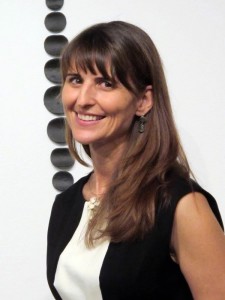
“I believe very strongly that a national organization will strengthen the network and relationships between both chapters and individual alumni, as well as elevate the status and recognition of the JET Programme and its alumni in the greater U.S.-Japan arena.” (Courtesy of Laurel Lukaszewski)
a
By Eden Law (Fukushima-ken, 2010-11) for JQ magazine. Eden currently serves on the JETAA New South Wales committee in Sydney, Australia as the online social media, webmaster and occasional editor. Got feedback? Leave a comment below.
In 2013, the JETAA Initiative project was launched by the United States-Japan Bridging Foundation (USJBF), with funding provided by the The Japan Foundation Center for Global Partnership (CGP). The first phase of the project was to assess the feasibility of a national JETAA organization, with the next phases dealing with the structure, duties and objectives of the new organization.
The first phase (feasibility study) has now wrapped up and its findings presented at the September 2014 National JETAA USA Conference, and the next phase is currently underway. JQ spoke with Laurel Lukaszewski (Kagoshima-ken, 1990-92), JETAA Initiative project director (who is also a highly noted, Washington D.C.-based ceramic artist in her own right), who kindly gave her time to discuss the JETAA Initiative, the findings and next steps for the project.
How did you come to be selected for the role of project director of the JETAA Initiative?
I applied for the position after I saw the job announcement posted in a number of different places. I work as an artist full-time, but my schedule is flexible and I thought this would be an exciting project. In my previous career, I was the executive director of the Japan-America Society of Washington, D.C. Before that, I worked for the Japan-America Society of the State of Washington in Seattle as their program director. I’ve also been part of the JET selection process for over 15 years (reviewing applications, interviewing, working at the embassy as the review committee liaison for two seasons). I have also been a board member of the National Cherry Blossom Festival since 2002 and have served on a number of arts-related nonprofit boards and committees over the years. I was also the secretary, then president, of the JETAA Pacific Northwest chapter in Seattle in the late ’90s, so JETAA is near and dear to my heart.
It’s been a year since your appointment. What were the main challenges you faced as a director?
While not exactly a challenge, it has been paramount to reach out to all 19 chapters in the U.S. to give them an understanding of what we are doing and why we think creating a national organization is necessary. To do this, both [JETAA co-founder] Paige Cottingham-Streater (Mie-ken, 1988-89) and I have attended national and regional conferences to give presentations and speak with alumni to garner their support. We have also made site visits to chapters in Kansas City, Atlanta and Denver to find out what challenges exist at the local level. It was also imperative to show the progress we made over the first year to our funder, The Japan Foundation Center for Global Partnership, so that we could continue.
Why was there a need to examine to conduct a feasibility study on whether a national organization was required?
The only way a national organization will be successful is if the JET alumni community wants it. This is being created for them. I believe very strongly that a national organization will strengthen the network and relationships between both chapters and individual alumni, as well as elevate the status and recognition of the JET Programme and its alumni in the greater U.S.-Japan arena, but the JET alumni community needs to believe this, too. We hope that the national organization will provide much needed support to smaller chapters and give alumni who live outside of large cities a way to connect to the broader JETAA community.
Writer Graham Shelby (Fukushima 1994-97) recently teamed up with The Butcher’s Apron Radio Show to produce this full-on audio story (music, sound EFX, the whole thing) about a distinctly JET experience.
“The Asakawa Christmas Party” tells the true story of a complicated Christmas party Graham and a few other American JETs attended at a Japanese elementary school. It was complicated because…
a.) it took place on the anniversary of the Pearl Harbor attack.
and…
b.) the teachers asked them to teach “a traditional American Christmas dance.” (FYI – there aren’t any).
How’d it turn out? Doozo.
The story was produced as part of Selfridge and Co’s Reasons to Believe series of original Christmas tales. Graham has a few more Japan stories here.
Justin’s Japan: Nippon in New York — Takashi Murakami, Studio Ghibli Documentary, Japan Society Party

See Takashi Murakami: In the Land of the Dead, Stepping on the Tail of a Rainbow at the Gagosian Gallery through Jan. 17. (Kaikai Kiki Co., Ltd. All Rights Reserved.)
By JQ magazine editor Justin Tedaldi (CIR Kobe-shi, 2001-02) for Examiner.com. Visit his Japanese culture page here for related stories.
With Thanksgiving (and the hopes of sensible eating) now just a memory, we turn to colder weather, falling snow, and the new year to come. Fortunately for Japanese culture fans, December is just as busy as the holiday season itself. Whether you’re hosting guests from out of town or looking to squeeze in an event or two in between parties, we’ve got you covered.
This month’s highlights include:
Now through Jan. 17
Takashi Murakami: In the Land of the Dead, Stepping on the Tail of a Rainbow
Gagosian Gallery, 555 West 24th Street
Free
Since the devastating Great Tōhoku Earthquake of 2011, prolific contemporary visual artist Takashi Murakami has explored Japanese art produced in response to historic natural disasters. Combining classical techniques with the latest technologies, he moves freely within an ever-expanding field of aesthetic issues and cultural inspirations. Mining religious and secular subjects favored by the so-called Japanese “eccentrics” or non-conformist artists of the Early Modern era commonly considered to be counterparts of the Western Romantic tradition, Murakami situates himself within their legacy of bold and lively individualism in a manner that is entirely his own and of his time.
Friday, Nov. 28
The Kingdom of Dreams and Madness
IFC Center, 323 Sixth Avenue
$14
New York premiere! Granted near-unfettered access to the notoriously insular Studio Ghibli, director Mami Sunada follows the three men who are the lifeblood of Ghibli—the eminent director Hayao Miyazaki, the producer Toshio Suzuki, and the elusive and influential “other director” Isao Takahata—over the course of a year as the studio rushes to complete two films, Miyazaki’s The Wind Rises and Takahata’s The Tale of The Princess Kaguya. The result is a rare “fly on the wall” glimpse of the inner workings of one of the world’s most celebrated animation studios, and an insight into the dreams, passion and singular dedication of these remarkable creators.
Wednesday, Dec. 3, 9:00 p.m.
Midnight in the Garden of Unearthy Delights Party
Japan Society, 333 47th Street
$25/$20 Japan Society members (until Dec. 2, $30/$25 afterward)
Japan Society Gallery serves up an exclusive after-dark soirée for patrons to escape into the wildly imaginative virtual gardens of its hit exhibition, Garden of Unearthly Delights: Works by Ikeda, Tenmyouya & teamLab. Sip some wine, beer, or a signature sake cocktail concocted just for Japan Society by JET alum Chris Johnson (Oita-ken, 1992-95), one of the country’s foremost experts on sake; enjoy the swinging sounds of jazz quartet The Red Birds + Francesco Ciniglio followed by the beats of DJ Aki til midnight; dig deep into the Garden with specially themed expert guided tours available all night; satisfy your sweet tooth at our dessert bar featuring tasty treats, fruits, and cheeses; and more! All food and drinks are covered by the cost of admission. Participants must be 21 years old or over.
For the complete story, click here.
JQ Magazine: Film Review — ‘The Kingdom of Dreams and Madness’
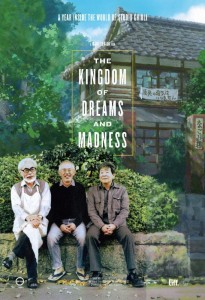
“Although beautiful and carefully crafted, in the end this work is one that ushers you into a new era of Ghibli by giving you a bittersweet goodbye.” (GKIDS/TIFF/© 2013 dwango)
By Alexis Agliano Sanborn (Shimane-ken, 2009-11) for JQ magazine. Alexis is a graduate student of Harvard University’s Regional Studies—East Asia (RSEA) program, and currently works as an executive associate at Asia Society in New York City.
The Kingdom of Dreams and Madness is a documentary following animation director Hayao Miyazaki during his last months at Studio Ghibli. Centering on the production arc to The Wind Rises, Miyazaki’s final and most controversial film, it offers a unique glimpse into the fading days of Studio Ghibli with Miyazaki at the helm.
The film is directed by Mami Sunada, a former assistant director on Hirokazu Kore-eda’s films. Although the documentary does not detail the advent of the unprecedented behind-the-scenes access, from its beginning Sunada and Miyazaki share a tacit understanding that his film straddles a nebulous period. It is the beginning to the end of an era. As Miyazaki admits unreservedly, “I’m a man of the 20th century. I don’t want to live in the 21st.” This documentary captures his twilight world.
Fading though Studio Ghibli may be, it is still a place where one anticipates a world not beholden to reality. What one finds is an atmosphere entrenched in the daily slog. There are deadlines to be met, decisions to be made, marketing, budgeting, and finances that throw the project for a whirl. It is a work place like any other. Somewhat unromantic.
Yet, just like the Ghibli films themselves, this documentary captures the beauty of the everyday. It is there we find appreciation, meaning and relevance through details and rituals. For Miyazaki, these include greeting kindergarteners on their way to school, going up to the rooftop to “watch the sky,” or even the small cheerful doodles pinned about the office with inspirational messages. These simple elements stitch the work into something meaningful.
JQ Magazine: Book Review — ‘Kuma-Kuma Chan, the Little Bear’
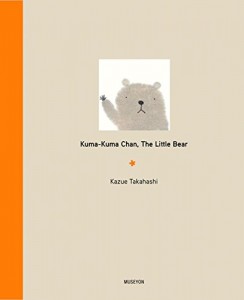
“The simplicity of the storyline and illustrations makes it easy for young readers, and also invites parents and children to dive deeper and create their own dialogue and inquisitions.” (Museyon Inc.)
By Heather Wilson Tomoyasu (Ibaraki-ken, 2004-06) for JQ magazine. Heather is a blogger on her site US-Japan Fam, owner of Miny Moe (multi-brand variety packs that allow parents to find the best brand for their baby), founder of Tunes 4 Bay Ridge Tots, and mommy to her yummy toddler, Kenzo! You can follow and connect with her on Twitter, Facebook, Pinterest, and Instagram.
I’m a sucker for the word chan. Seriously. I don’t know what it is; chan is just so endearing and cute and, well, Japanese!! If you’re a chan-aholic like me, get excited, because there is a new children’s book coming your way that is all about the chan!
The beloved children’s book, Kuma-Kuma Chan, the Little Bear, originally written by Kazue Takahashi and published in Japan in 2001, has just been translated into English, republished by Museyon, and will be available in stores and online Dec. 1 (just in time for those stocking stuffer purchases—hoorah!!). This hardcover book is small, about 5” x 7”, with 52 pages of simple-yet-adorable illustrations and minimal text. The story is short and sweet, with Takahashi describing what she imagines Kuma-Kuma Chan to do every day. With each turn of the page, you are greeted with an illustration and a single sentence describing a different chore or activity, such as shopping, gardening (and sometimes hurting his back), and personal hygiene such as, “He trims the nails of his paws. Then he lines up the cut nails and gazes at them.” I mean, come on, that is kind of hilarious.
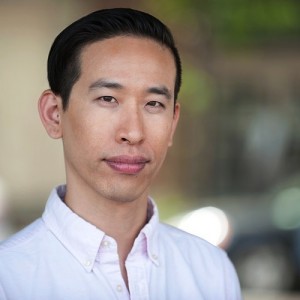
“Living in Japan, you learn not just the Japanese language, but a new kinesthetic language as well, such as bowing all the time like it’s an instinct, or getting used to sitting on a tatami mat instead of a chair, or bathing Japanese-style. It’s like a new vocabulary for living in your own body.” (Martin Bentsen/City Headshots)
By Rafael Villadiego (Nagasaki-ken, 2010-13) for JQ magazine. A member of JETAA New South Wales, Rafael is a collector of words on a journey still searching for a destination, who has a tendency to forget, we are all sometimes like the rain…
Lee-Sean Huang (Oita-ken, 2003-06) was an ALT in Nakatsu City. Upon returning to the United States, he became the webmaster for JETAA New York. In 2008, together with Steven Horowitz (Aichi-ken, 1992-94), he helped to found JETwit.com in 2008 as an avenue for connecting and giving voice to the JET alumni freelance and professional community.
A modern-day Renaissance man, Huang is the co-founder and creative director behind the community-centered design and social innovation firm Foossa. He is also a faculty member at SVA’s MFA Design for Social Innovation program and an instructor of the Brazilian martial art capoeira.
He recently joined the Wisdom Hackers collective together with other likeminded artists, activists and entrepreneurs, to which he contributed a chapter entitled “The Thinking Body,” which outlines his views behind the virtues of kinesthetic creativity. In this exclusive interview, Huang shares his journey and thought processes with JQ’s readers.
The philosophical dispatches from Wisdom Hackers are described as an “incubator for philosophers that compiles dispatches from young, edgy thinkers from major cities across the globe.” Can you tell us a little more about this initiative and how you got involved?
We are building a movement for critical inquiry and connecting ancient wisdom to our contemporary context. In our present form, we are partnered with e-publishers The Pigeonhole and releasing a dispatch a week over 10 weeks. Next year, we plan on releasing a limited edition physical book made by monks in Denmark. Beyond publishing our own ideas, we want to create a curriculum or “cookbook” of sorts, and get it into schools, colleges, and other learning environments. The Wisdom Hackers curriculum would provide a starting point for anybody to start asking deep questions, think critically, and create their own dispatch to tell their own story and perspective. The curriculum would also include a guide for how to build your own community of like-minded seekers. That’s a bit of a preview of where we are going with Wisdom Hackers.
My friend Alexa Clay is one of the original instigators of Wisdom Hackers. We were introduced a few years ago through a mutual friend, Alnoor Ladha, who is also a Wisdom Hackers seeker. I ended up becoming an advisor for Alexa’s book, The Misfit Economy, and on her project, League of Intrapreneurs. When Alexa approached me about Wisdom Hackers, I jumped at the idea. I had a bunch of ideas floating around in my head that did not fit in the format of the usual blog posts and articles that I write as part of my design and teaching career. I also liked the challenge of writing longer form content, something I was a little afraid of doing, but that is exactly why I said “yes.”
You are certainly amongst august company. Have you had any direct interaction with the other “seekers” of your collective, or have you developed your ideas primarily on your own?
I have become good friends with the New York-based Wisdom Hackers crew. We hosted a Wisdom Hackers panel discussion here in September. We have edited each other’s dispatches and also have a private Facebook group where we share ideas, so there is lots of cross-pollination happening.
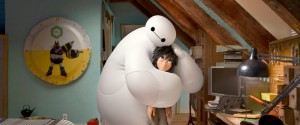
“Visually, the film is a treat, as the animators have combined elements of Japanese anime with Hollywood CGI-style animation.” (Walt Disney Pictures)
By Lyle Sylvander (Yokohama-shi, 2001-02) for JQ magazine. Lyle has completed a master’s program at the School of International and Public Affairs at Columbia University and has been writing for the JET Alumni Association of New York since 2004. He is also the goalkeeper for FC Japan, a New York City-based soccer team.
When the Walt Disney Company acquired Marvel Entertainment in 2009, it became inevitable that the superheroes in the comic book canon would find themselves headlining their own Disney movies. That notion came to fruition in 2012 when Disney released Marvel’s The Avengers, followed by the Thor, Iron Man and Captain America sequels. The lesser-known comic book superheroes collectively known as the Guardians of the Galaxy made their debut in 2014 and grossed an astounding $765 million worldwide.
Coming on the heels of that release is the latest Disney-Marvel collaboration, Big Hero 6—the first to be produced by its animation division. Unlike the other films, Big Hero 6 is aimed at the family audience so that it can entertain young children as well as teenagers and adults. It shares more in common with another Disney subsidiary named Pixar than its Marvel brethren. While it does not attain the high standards set by Pixar in such films as Toy Story, Monsters Inc. and The Incredibles (let’s face it—nothing does), it is an entertaining and fun movie.
Presumably the characters in Big Hero 6 are not well known outside the realm of comic book fandom—they don’t have the name recognition of Spider-Man, the Hulk, the Fantastic Four, etc. But the absence of brand recognition comes with a pair of trump cards: low preconceived expectations and the element of surprise. Many in the audience will be introduced to the characters and world of Big Hero 6 for the first time—and it is a remarkably innovative world.
Justin’s Japan: Nippon in New York — ‘Big Hero 6,’ Babymetal, Richie Kotzen, Asa Akira, Perfume
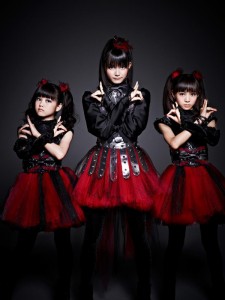
Babymetal brings their unique brand of “kawaii metal” to Hammerstein Ballroom Nov. 4. (Courtesy of WME Entertainment)
By JQ magazine editor Justin Tedaldi (CIR Kobe-shi, 2001-02) for Examiner.com. Visit his Japanese culture page here for related stories.
From Disney to heavy metal to J-pop, November is just as colorful as the leaves tumbling through the air. Add to that a cutting-edge kimono exhibition, a Shakespearean samurai epic, and the largest event in the USA dedicated to love and sex, and you’ve got an irresistibly epic rundown.
This month’s highlights include:
Tuesday, Nov. 4, 7:00 p.m.
Hammerstein Ballroom, 311 West 34th Street
$49.50
Formed in 2010, Babymetal brings a kawaii blend of traditional schoolgirl J-pop and death metal. Hot off the heels of their debut album released in the U.S. earlier this year, the band has been burning up the charts in Japan, where their live video for “Gimmie Choco!!” (lensed at the legendary Nipon Budokan in Tokyo) has racked up over 17 million views on YouTube to date. Endorsed by shredders like Marty Friedman (Megadeth) and Jeff Walker (Carcass) alike, Babymetal are prepared for a whole new audience on the eve of their Hammerstein debut.
Wednesday, Nov. 5, 7:30 p.m.
B.B. King Blues Club and Grill, 237 West 42nd Street
$28-$32
With guitar styles ranging from rock, blues, jazz and fusion to pop and soul, Richie Kotzen has built a remarkably diverse 25-year career as a guitarist, singer and songwriter. A veteran of numerous groups including the Winery Dogs, Kotzen’s Japan cred is extensive: He wrote the number one song “Shine” as a member of Mr. Big, which was used as the ending theme for the anime series Hellsing, has recorded an entirealbum of music from the anime series Gundam, and toured as the opening act on the Japanese leg of the Rolling Stones’ 2006 tour. The Kotzen Telecaster guitar has repeatedly been the #1 selling signature model guitar for Fender Japan. This special solo show will include selections from The Essential Richie Kotzen, the artist’s latest release, which caps a career of highlights in anticipation for his next studio album coming next year.
Nov. 6-12
Nippon Club Gallery, 145 West 57th Street
Free
Kiyomi Kitagawa, a popular fashion designer and a representative of Atelier Bi-no-Sei, revives stylish and practical design dresses in harmony with modern lifestyle from traditional craftwork, a microcosm of Japanese sensibility that has been shaped by the passing of the “four seasons” since ancient times. These dresses show not only the “craftsman’s spirit” by seasoned artisans, but also her knowledge and experience as a textile garment designer. At this exhibition, 30 pieces of kimono dresses—some using fabric no longer produced—will be displayed with luxurious embroidery and a variety of techniques.
For the complete story, click here.

